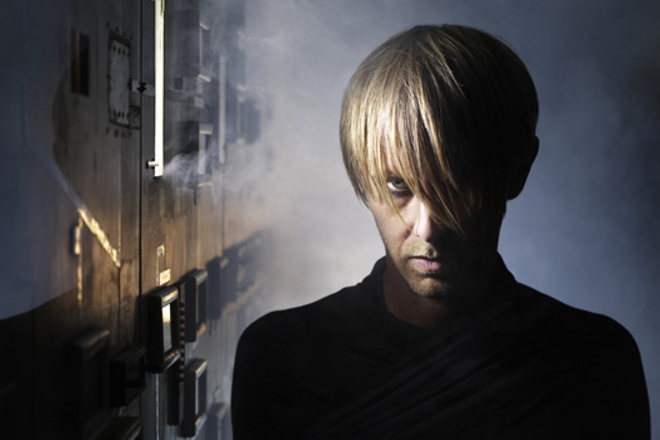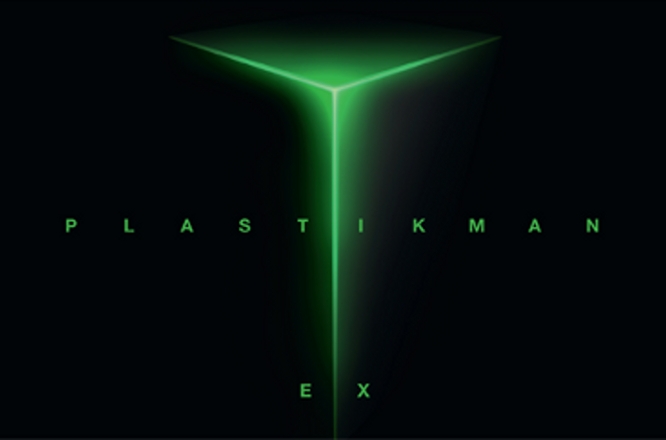As a DJ, Richie Hawtin has the power to keep the crowd interested with a subtle change – switching an accent from an on-the-beat rhythm to one that’s off, transitioning from a duple to triplet rhythm, or just intensifying the sound slightly, for example.
Hawtin’s on-again-off-again Plastikman project captures these sensibilities, albeit in a far more experimental context. While long-time fans gripe that the minimalist techno DJ/producer has gone “too big room” these days, the revived Plastikman moves in a different direction.
On June 14, Hawtin brought back Plastikman with new album EX, informally a follow-up to 2003’s Closer. A live album, EX grew out of new music Hawtin put together for the Guggenheim’s International Gala, in which fashion designer Raf Simons invited the techno producer to perform. According to a statement, Hawtin, who wrote without the dance floor in mind and rather for the setting’s confluence of music and art, realized he had enough material for a full-length release in the process. EX, then, was recorded at the event.
Much of EX feels timeless and context-free as a result. Hawtin liberally uses 303s and drum machines, creating minimalist soundscapes joined together over seven tracks. The move away from the dance floor, however, only feels partial; at points, EX works as a down tempo, chill record, while at others, the texture grasps at but doesn’t quite reach the electronic-yet-organic tone poems of Alan Wilder’s Recoil project.
First track “Exposed” begins with a single drum loop, hinting at the minimalist character lasting for the next 50 minutes. Glitchy synths gradually enter, sporadically and with a lack of coherency that suggests the sounds of an orchestra tuning. Here, Hawtin appears to experiment with a wider palette of sounds – sometimes sinister, sometimes chromatic, and with or without a beat – but the result suggests that he’s searching more for an identity to give this track.

Toward the end of “Exposed,” the predominating theme emerges – a three-note synth line that loops throughout and contrasts with vibrating, low-pitched chords below.
Transitioning into “Extend,” Hawtin keeps the pattern intact while switching to a new pitch sequence and opting for lower-pitched string synth chords. The change, however, reflects more minimalist 20th century classical music – think Philip Glass – in which a simple pattern of intervals repeats for a few minutes and then suddenly switches to something else.
But while criticism leveled against Glass specifically goes over this repetitive structure, Hawtin layers melodic figures over each other, creating chaos of multiple glitch pitch groups, while a foundation of sustained chords and low-key beats fades in and out.
Fortunately, Hawtin strays from this formula at points – adding some variety to what could’ve felt like a one-concept album. “Expand” builds up from a soundscape of nothingness, with a heart beat-like rhythm picking up the pace and soon forming the foundation for dueling pitch groups – here, one built on a fourth and another, pitched up an octave, around a C-minor chord.
As well, “Extrude” obliterates the careful minimalism for just a moment, with a big, fat bass line built on a minor third ebbing and flowing. “Expire” juxtaposes multiple rhythmic figures, with quarter and eighth notes giving way to the intensity of just eights; on top of this, Hawtin does what’s essentially a tour through intervals, going up multiple octaves from the root note.
Throughout most, a snare or handclap flourishes, showing that even with this more free-form feel, Hawtin’s still well-grounded in the dance music world.
On one hand, EX marks a return for the producer’s experimental side and appears as an outlet for old-school techno sounds in another setting. But overall, EX passes through, with nothing particularly memorable about it, and as the listener, you’re left wondering, “What’s Hawtin trying to achieve?” Glitchy mood music for celebrities? A techno-away-from-the-dance floor concept? Plastikman may be back, but EX shows a lack of certainty and focus.




